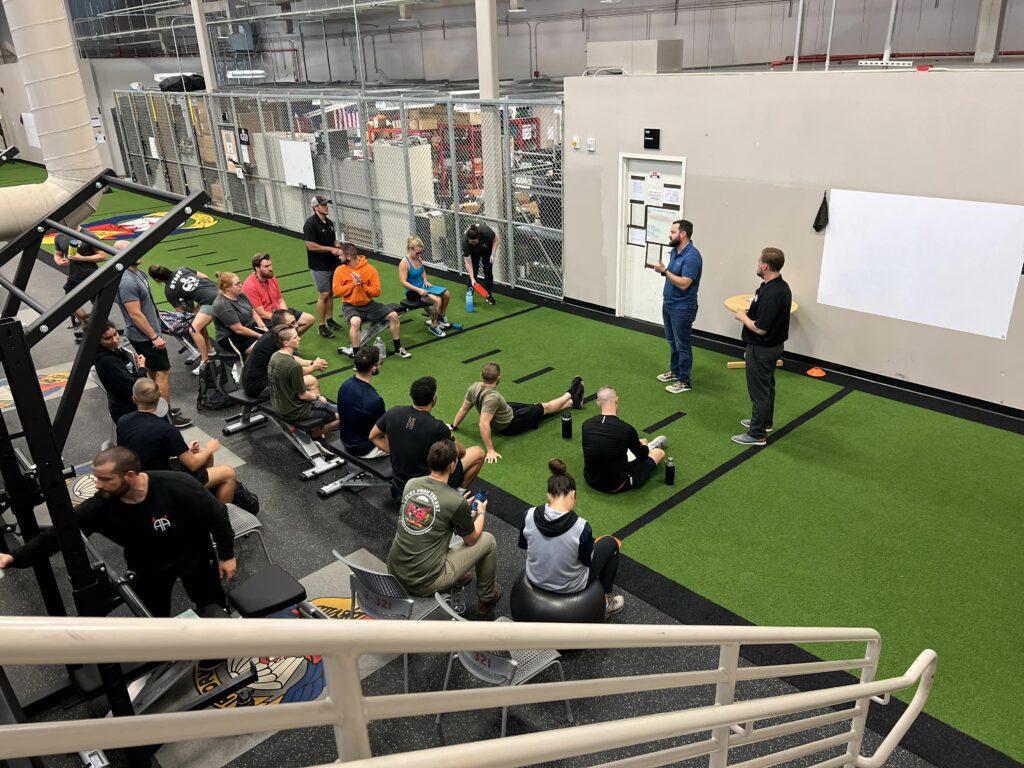8 May 2024
Holistic Health App Equips Leaders to Inform Service Member Readiness
Q&A with Geneva Clinical Research Coordinator II Kou Yang, MA, LAT, ATC
The strength of our Nation’s defense is dependent upon the relentless focus on our service members’ health, preparation, and resilience. To meet the mission of the current and future operational requirements of our Military Health System and the DOD, Geneva synchronizes military medical research and expands partnerships for optimal warfighter readiness.
In 2021, the Army Applications Laboratory (AAL) embarked on a crucial mission: to develop a comprehensive solution for tracking and aggregating service members’ holistic health and fitness (H2F) data. This system, now known as the Army’s Holistic Health & Fitness Management System (H2FMS), is a game-changer. It equips leaders with the data they need to make informed decisions about service member readiness, thereby enhancing the effectiveness of our defense.
One of the key players in this project is Kou Yang, MA, LAT, ATC, a clinical research coordinator II for Geneva. We had the opportunity to speak with him about his role, the project’s achievements, and his hopes for its long-term impact on service members. His insights provide a unique perspective on the project’s development and its potential benefits.
What is your role in this project and with Geneva?

As a Research Coordinator at Geneva, I facilitated communication between the Coach Me Plus (CM+), TIAG, and the 1st Brigade of the 82nd airborne division during the release of the CM+ application. My day-to-day role revolved around supporting providers using the system, gathering feedback on improvements and future developments, troubleshooting system administrative issues, and identifying bugs for developers to tackle.
Can you give us a brief background on this project and the role that the Fort Liberty Research Institute (FLRI) and Geneva had within it?
The Army’s Holistic Health & Fitness Management System (H2FMS) was not just a creation, but a significant step towards improving soldier readiness and lethality. This program addresses five crucial domains: physical, nutritional, mental, spiritual, and sleep. The CM+ project, a collaboration between TIAG and CM+, was instrumental in facilitating these areas of interest by creating a mobile platform for practitioners and soldiers to track and improve those metrics. The app, previously utilized by professional sports teams, can track nutrition, manage workouts, send readiness surveys, and integrate with wearable technology to track metrics like sleep quality. Both TIAG and CM+ partnered with Geneva and FLRI to provide a research coordinator to help facilitate the application’s use and gather developers’ feedback for further app development.
What is the importance of prioritizing the holistic health of the service member vs just their physical health?
While physical health is crucial, our service members require more than physical prowess to succeed. The Army’s various needs require soldiers to be physically, mentally, emotionally, and spiritually ready. If any of these areas is in significant distress, a soldier’s performance will likely decrease, and injury risk may increase. Having a holistic approach to the service member’s health allows us to investigate areas that might be hindering overall performance that do not show up on your traditional 2-mile run assessment.

What are you most proud of from this research project?
I am proud to see how healthcare is evolving to be more holistic and accessible to soldiers. As an Athletic Trainer, I know how injuries develop and potentially compound when not promptly addressed. The H2FMS, TIAG, and CM+ programs are truly making strides to improve the quality of care soldiers receive, and I am excited to be a part of such an initiative that aims to improve healthcare outcomes.
What plans are there to get more brigades to use this platform?
The program has continuously worked with various units outside of Fort Liberty, including the 81st Readiness Division, Army National Guard, and 513th Military Intelligence Brigade, just to name a few.
What challenges arose during this project, and what lessons were learned?
One of the largest challenges is getting providers and soldiers onto the system efficiently and quickly. Soldiers are constantly moving and transitioning throughout the year, which adds difficulty in maintaining up-to-date rosters. To address this bottleneck, the team created solutions, including training personnel, establishing clear communication with providers, and developing a soldier self-enrollment process. In addition, another challenge presented itself as more and more users were added. With increased application utilization, loading times on certain pages were increasing, leading to some minor frustrations. Thankfully, the team has proactively addressed the situation and is committed to continuous improvement in future rollouts.
How many people have been impacted by this program so far?
During the system’s pilot, 2,300 soldiers were registered, over 17,500 logins were recorded, 70,000 workout sets were tracked, and 150,000 wearable data points were captured. Since then, those metrics have only grown.
Do you have any testimonials to share?
A success testimonial was shared from an athletic trainer working with the 1-509th Infantry Regiment, Geronimo. Lexie Stamm, the battalion Athletic Trainer with 1-509th, created personalized rehabilitation plans for common injuries. In recovery, soldiers could log into the application and complete the tailored rehab program during morning physical training, saving Lexie time and effort. Another success story was when it facilitated a financial well-being assessment for over 500 soldiers. Soldiers who attended a financial education lecture were provided post-surveys to assess their financial situation. Those identified as needing more guidance were contacted by a coordinator using the app for follow-up education.
Where can people find more information to learn more about the project?
To learn more about what the CM+ and TIAG team is doing, please visit:
AAL Report on Recent events, page 20-23
Army 2025 President’s Budget Highlights
Disclaimer: The views expressed do not reflect the official policy of the Army, the Department of Defense, or the U.S. Government.

"Having a holistic approach to the service member's health allows us to investigate areas that might be hindering overall performance that do not show up on your traditional 2-mile run assessment."
Kou Yang, MA, LAT, ATC, Geneva Clinical Research Coordinator II
HIGHLIGHTS
- This program addresses five crucial domains: physical, nutritional, mental, spiritual, and sleep.
- The CM+ project, a collaboration between TIAG and CM+, was instrumental in facilitating these areas of interest by creating a mobile platform for practitioners and soldiers to track and improve those metrics.
- Both TIAG and CM+ partnered with Geneva and FLRI to provide a research coordinator to help facilitate the application's use and gather developers' feedback for further app development.


